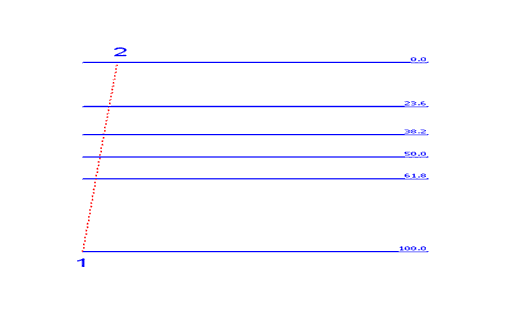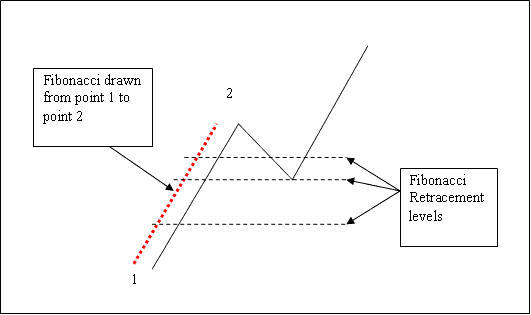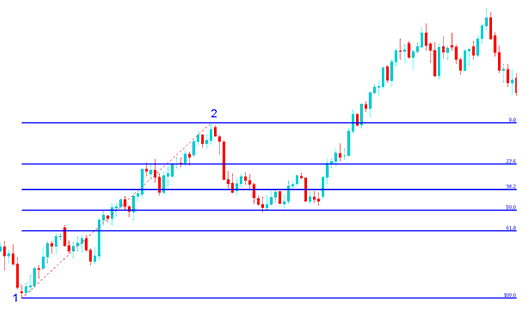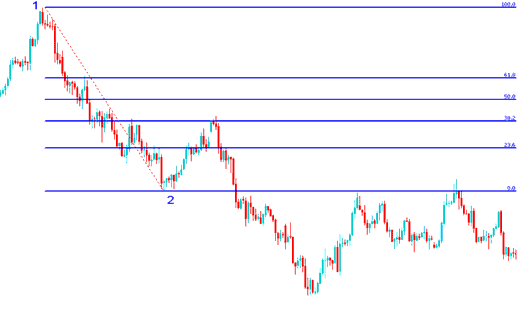How to Use Fibonacci Retracement Levels
The Fibonacci retracement levels are explained below: traders should use this Fibonacci Retracement Levels stock indices indicator to determine where to open a trade whether a buy indices trade in a indices up trend and a sell indices trade in a downward indices trend.
How Do I Use Fibonacci Retracement Levels for Day Trading?

How Do I Use Fibonacci Retracement Levels for Day Trading?
Fibonacci Retracement Tool Explained

Fibonacci Retracement Tool Explained
How Do I Use Fibonacci Retracement?
In the technical analysis example explained and illustrated below the stock indices price is moving up between chart point 1 and chart point 2 then after chart point 2 it retraces down to 50.0% retracement level then stock indices price continues moving up in the original upward indices trend. Note that this stock indices retracement indicator is drawn from point 1 to point 2 in the direction of the indices trend (Upward Direction).

Technical Analysis of How to Use Fibonacci Retracement in an Up Indices Trend
Technical Analysis of How to Use Fibonacci Retracement in an Up Indices Trend
Once the stock indices price hit the 50.0% retracement level, this retracement level provided a lot of support for the indices price, and afterwards the stock indices trading market then resumed the original upward indices trend and continued to move up.
For this technical analysis example, the stock indices price retracement reached the 50.0% retracement level, but most of the time the stock indices trading market will retrace up to 38.2% retracement level and therefore most of the time indices traders set their buy limit indices orders at the 38.2% Fibonacci retracement level, while at the same time placing a stop just below 61.8% Fibonacci retracement level.
How Do I Use Fibonacci Retracement?
In the Indices Retracement Strategy example explained and illustrated below the stock indices trading market is moving down between chart point 1 and chart point 2, then after chart point 2 the stock indices price then retraces up to 38.2% retracement level then it continues moving downward in the original downward indices trend. Note that this stock indices retracement indicator is drawn from point 1 to point 2 in the direction of the indices trend (Downward Direction).

Technical Analysis of How to Use Fibonacci Retracement in a Down Indices Trend
Technical Analysis of How to Use Fibonacci Retracement in a Down Indices Trend
The above technical analysis example is a stock indices retracement trading setup where the stock indices price retraces immediately after touching the 38.2% Stock Indices Chart Fibonacci Retracement Level.
In this technical analysis example the retracement of stock indices price reached 38.2% retracement level and did not get to 50.0% retracement level. It is always good to use 38.2% retracement level because most times the stock indices price retracement does not always get to 50.0% retracement level.
This Indices Retracement level provided a lot of resistance for the stock indices price retracement, this was the best place for a indices trader to place a sell limit indices order as the stock indices trading market quickly moved down after hitting this stock indices price retracement level.
